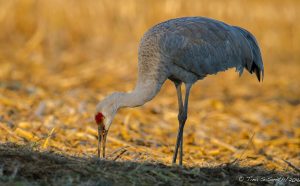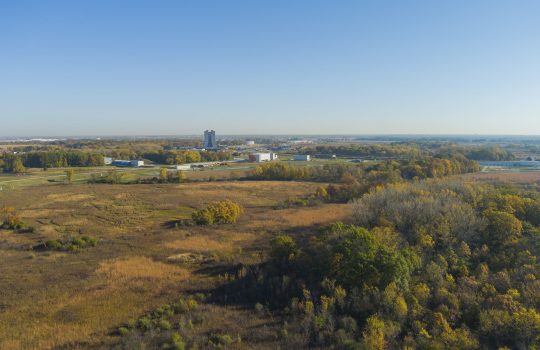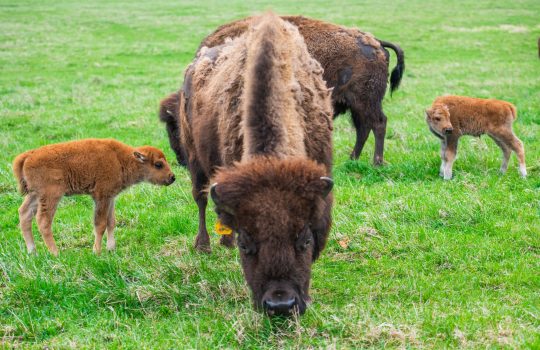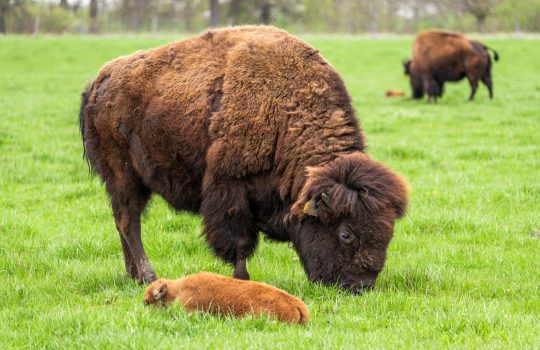Beginning in August, Fermilab’s Batavia Road gate came under the watchful eyes of several sandhill cranes (Grus canadensis). As employees and visitors alike passed through the gate, it would be difficult to miss these stately sentinels. It’s hard to ignore a bird that can look you straight in the eye as you pass by seated in your car. They stand roughly four feet tall on long legs and have a 6-foot wingspan. They range in color from a powdery gray to rusty brown with a red crown.
Sandhill cranes are annual visitors to Fermilab. During spring and fall migration they will pass over in large flocks. Periodically, some individuals will be found foraging in agricultural fields.
Bird monitors on site keep an eye out for any signs that this species might use Fermilab for breeding. At this point there is no evidence that sandhill cranes have bred on site. The appearance of two pairs of adult sandhill cranes foraging on site late in the breeding season is intriguing as they likely spent the summer either at Fermilab or very nearby. They seem to like foraging in the short grasses that probably make hunting a lot easier for them. Perhaps this is a new benefit of co-existing in an urbanized environment.
This species is making a remarkable comeback in northeast Illinois. As recently as 1989 sandhill cranes were federally listed as an endangered species. Their numbers had plummeted due to hunting and wetlands destruction. Sandhill cranes since have benefited from both habitat and species protection. In 1999 the species was moved from endangered to threatened status. By 2009 they had recovered enough to be delisted. However, they are still protected under the Federal Migratory Bird Act. So, it is a big deal that sandhill cranes have decided to make Fermilab their home for part of the year.
These animals seem so relaxed and tame as they forage in the open lawns and planting beds. We need to remind ourselves that these are wild animals and should be treated as such. For the most part humans and vehicles are quite foreign to them. They do not know how to react to them and don’t realize the dangers involved in foraging in or along roadways. In September, a few miles from Fermilab’s east boundary, a sandhill crane was on the losing end of a collision with a vehicle. Its mate was seen standing over the body for the remainder of the day. These birds should be given their space for their safety as well as your own. They are well equipped to fend off large predators in the wild and they can easily inflict pain with their sharp bills.
The appropriate way to interact with our new neighbors is to give them plenty of room. When you observe them along roadways, slow down. Enjoy the opportunity to see them, but give them their space. Do not approach them. They don’t need a handout or a pat on the head. Just leave them to be the wild animals that they are.
Denis Kania is the manager of natural areas for the St. Charles Park District and a consulting member of the Fermilab Ecological Land Management Committee.




